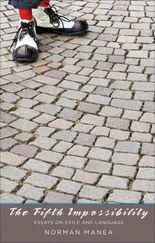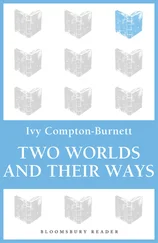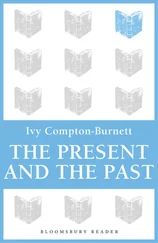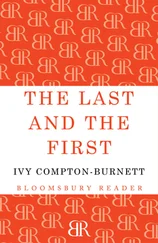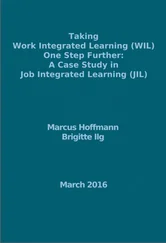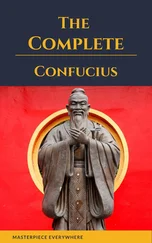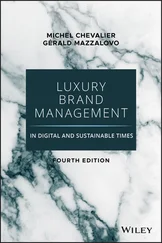ibidem-Press, Stuttgart
Table of Contents
Introduction
Chapter 1 Bilingual Children
Vignette “A Family Experiment”
1.1 Dismantling Myths and Legends of Bilingualism
1.2 The Guide for Bilingual Parents
1.3 The Graduate Medical School of Hanover
1.4 The Gap Between Knowing and Doing
1.5 The Dual System Hypothesis
1.6 The Unitary Language System Hypothesis
Chapter 2 Nativist and Cognitive Positions
Vignette “Language is the dress of thought”
2.1 The Research on Second Language Acquisition
2.2 Behaviorism and a Black Box
2.3 The Universal Grammar and Noam Chomsky
2.4 The Minimalist Position of Recursion
2.5 The Input and Output Hypotheses
2.6 Language Learning as a Social Process—The Zone of Proximal Development (ZPD)
Chapter 3 Nature versus Nurture
Vignette “The American Experience”
3.1 The Fundamental Difference Hypothesis
3.2 Linking Nature and Nurture
3.3 Anthropology Sheds a New Light
3.4 The Neuro-biological View
3.5 The Task-based Approach
Chapter 4 Learning (Foreign) Languages in Cultural Contexts—Historic and Current Developments
Vignette “The Dunera Boys”
4.1 Communicative Language Teaching and the Grammar Question
4.2 The Common European Framework for Languages
4.3 Rethinking Foreign Language Teaching
4.4 The Two Tales of CLIL
4.5 CLIL Example—Teaching “Bauhaus” Professor Ingrid Zeller; Northwestern University
Chapter 5 Dimensions and Contexts of Bilingual Teaching
Vignette “Intercultural Encounters in Student Exchanges”
5.1 Scotland
5.2 Canada and the US
5.3 Australia (& Deutsche Schule Melbourne)
5.4 Germany and Europe
5.5 Learning Principles
5.6 Principles of Quality Teaching (Luther College)
5.7 Teaching Design as an Instructional Model (McKinnon Secondary College)
5.8 Linguistic Risk Taking (Ottawa)
Chapter 6 Building Blocks of CLIL
Vignette “Windows in the Foreign Language Classroom”
6.1 Features of Multi-perspective Learning
6.2 Guiding Questions for CLIL Lesson Planning
6.3 The 4 Cs Framework
6.4 Discourse Competences—Bridging BICS and CALP
6.5 The Language Triptych
6.6 The Bilingual Triangle and the Third Space
6.7 Task Design Wheel and Task-verbs
6.8 Primacy of Content
6.9 Scaffolding as a Dual Teaching Strategy
Chapter 7 Literary CLIL
Vignette “Intertextuality”
7.1 Literature as Part of the Bilingual Curriculum
7.2 Literature in the CEF
7.3 Selection Criteria
7.4 Narratives of Literary CLIL
7.5 Literary CLIL as a Theory of Practice
7.6 Study Design for Literary Analysis and Criticism
7.7 Literary Studies in Contexts, Genres and Target Countries
7.8 Intertextuality
Chapter 8 CLIL Tools and Skills
Vignette “Worksheet Compass”
8.1 Scaffolding as a Tool in CLIL
8.2 Task-based Language Teaching (TBLT)
8.3 English Unlimited (blended content-language learning)
8.4 The Visual Turn
8.5 Learnscapes
Chapter 9 CLIL Modules
Vignette “Teaching Units”
9.1 Measuring Your Media (A2)
9.2 Refugees (A2)
9.3 Analysing Political Cartoons (B1)
9.4 Jacobites and Enlightenment (B1)
9.5 Caledonia—Creating a Podcast (B2)
9.6 War and Peace—Calvin and Hobbes (B2)
9.7 Herringbone Technique (B2+)
9.8 Absolutism (B2+)
9.9 Reciprocal Teaching (C1)
9.10 International Relations—Libya (C1)
Chapter 10 CLIL Challenges and Desiderata
Vignette “Venn Diagram”
10.1 CLIL as a Catalyst for Change
10.2 The Innovative Potential
10.3 Competence and Content—a CLIL Example
10.4 Future Directions
Glossary of Teaching Strategies and Learning Skills
Content and Language Integrated Learning (CLIL): A Methodology of Bilingual Teaching
Have you ever wondered why bilingual education has become increasingly popular with young families and even influences their choice for later and better schooling? And why the expectations of effective and successful language learning are connected with interest in language programs that allow for more focus on authentic topics and intriguing themes rather than on grammar and vocabulary training? The story of acquiring foreign languages at the same time as studying relevant and real-life events and issues sounds, at least at first sight, like trying to square the circle.
But the story of bilingualism is neither new nor spectacular. It has been around since times immemorable and even the Romans had to learn Greek to usurp their neighbor’s culture and rule the Aegean region. Yet acquiring modern languages nowadays is not a question of dominating another culture or ruling other people, but rather learning about their perspectives and ideas in an inter/transcultural way and meeting in a Third Space—to be discovered later in this narrative. So how can we make sure that students will be able to access the necessary information in a language other than their own? How do we support learners to achieve the aims and objectives set to them and help them move forward in their Zone of Proximal Development, which will be outlined further below? And how will they be empowered to develop their own linguistic and critical thinking skills without reneging on the challenges involved? The solution to this puzzle comes from balancing the two bilingual goals in a Content and Language Integrated Learning process. The acronym CLIL gives direction and priority in the interplay between subject matter and discourse function with “ language as the dress of thought”—a well-known saying since Dr. Johnson’s 18th century.
Thus, the methodology of CLIL in question here would best be described as a blueprint of integrationitself, namely that of content and languages in a combined teaching strategy. The worldwide growth of bilingual programs inside and outside of school contexts has raised different expectations of students and instructors as far as successful and effective language learning is concerned. These reach from more exposure to the target language (and better marks as a result) to deeper content-based studies (generating higher levels of critical thinking). And this is also why an Integrated Methodologyneeds to cover content-based issues as well as teaching strategies and learning theories, since for the first time such programs endeavor to deal with two teaching objects at the same time, albeit in a well-defined sequence of which may be called “ language follows content ”. The way to deal with didactic, content-related questions without neglecting methodological procedures involves different perspectives and comprehensive approaches in selecting appropriate topics and related discourse concepts. In other words, the task at hand requires a dual way of organizing the linguistic dimension of teaching subject matters in another than the native language—in our case for social sciences, history and geography. The assumption is that this approach will work for other content subjects ( Sachfächer ) as well, because the didactic-methodological issuesinvolved are the two sides of the same coin like in content and language.
At the same time, a theory of practiceis needed to enable practitioners to decide at which side of the coin they need to look first and after certain stages in the teaching/learning process, the aforementioned Zone of Proximal Development (according to Vygotsky 1962). In the definition of Do Coyle, a long-standing proponent of CLIL from the University of Aberdeen, a theory of practice:
Читать дальше


